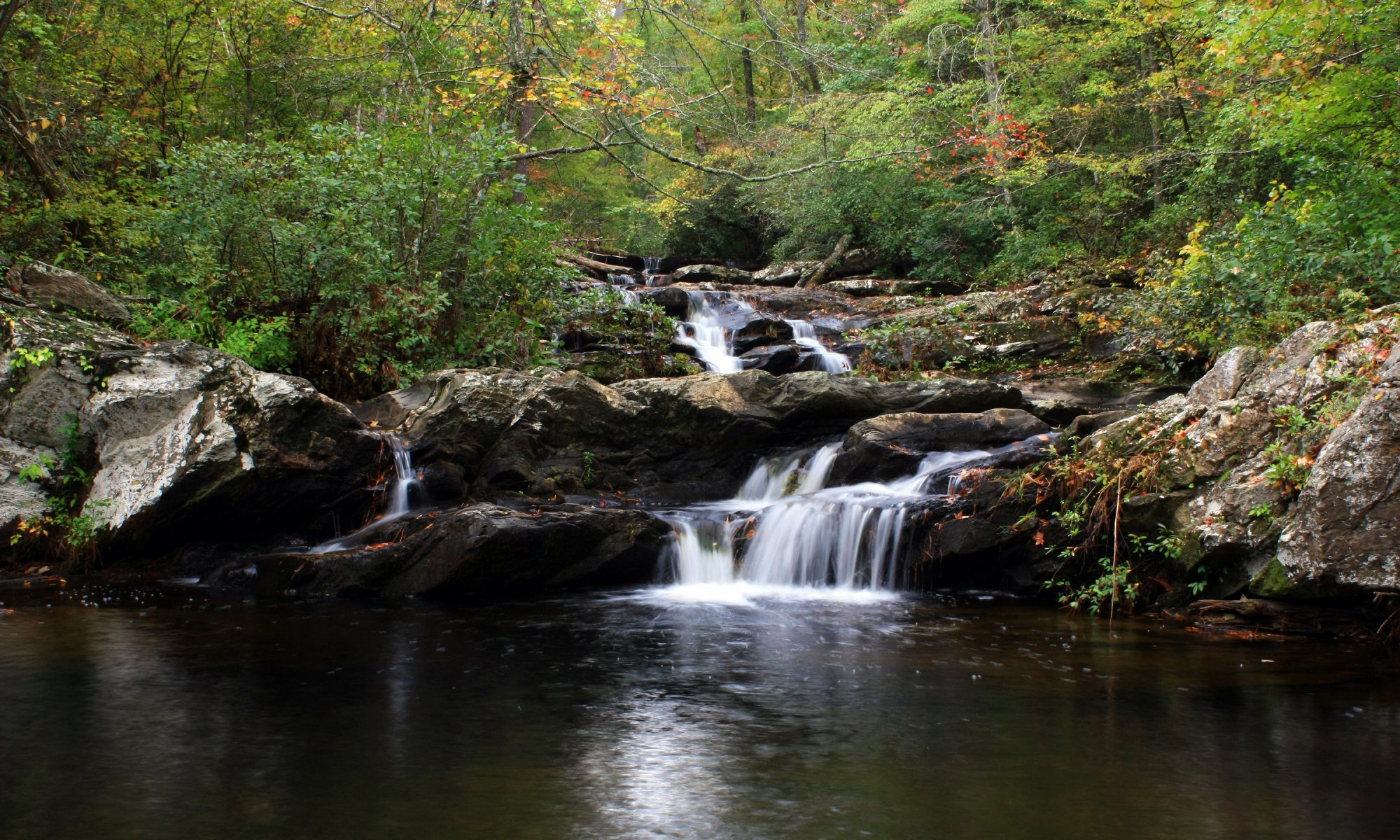 Here in the mountains of north Georgia it’s already the worse tick season I’ve experienced to date. It’s early June, and already I’ve removed from my body more ticks than I chalked up for all of last summer. I’m referring to the larger ticks that we can actually feel walking on us, as opposed to the deer tick which is so small we can’t detect its movement. (These latter ones–the size of the period at the end of this parenthetical–are the potential carriers of Lyme Disease; but the former can transmit other serious diseases as well, one of those being Mountain Spotted Fever.) With Lyme Disease studies show that the pathogens are transmitted from an attached tick to a host in about 24 hours. But there are conflicting studies that make claims for faster transmission. However, some diseases (I read about 20 of these in a current report I received from CDC) transmit from tick to host in a matter of minutes. All of this information should inspire frequent body checks by all of us.
Here in the mountains of north Georgia it’s already the worse tick season I’ve experienced to date. It’s early June, and already I’ve removed from my body more ticks than I chalked up for all of last summer. I’m referring to the larger ticks that we can actually feel walking on us, as opposed to the deer tick which is so small we can’t detect its movement. (These latter ones–the size of the period at the end of this parenthetical–are the potential carriers of Lyme Disease; but the former can transmit other serious diseases as well, one of those being Mountain Spotted Fever.) With Lyme Disease studies show that the pathogens are transmitted from an attached tick to a host in about 24 hours. But there are conflicting studies that make claims for faster transmission. However, some diseases (I read about 20 of these in a current report I received from CDC) transmit from tick to host in a matter of minutes. All of this information should inspire frequent body checks by all of us.
Aside from the diseases that we can pick up while hosting a blood-sucker (like a tick), there is the lesser crime of the itch that lingers at the bite site. For a single tick bite–or even three or four–this is not a crucial consideration. But ticks are only one name on the list of itch-makers. More numerous are the bites of chiggers and mosquitos. Even stings–as from yellow jackets, hornets, centipedes, scorpions, and the like–can itch long after the pain has subsided. Of all these little invaders and warriors, arguably none takes a toll like the chigger.
In an emergency situation, when one is forced into an unexpected overnight stay in the forest for an indefinite time, there is quite a bit of work that needs to be done: shelter building, shelter waterproofing, more shelter waterproofing, acquisition of drinking water, establishing a fire, maintaining that fire, fuel gathering, foraging, cooking, etc. In summer, in our neck of the woods, if such a person sleeps on the ground, he is probably going to discover thirty or more chigger bites on the following day. If he piles up leaves for a mattress, double that number of bites. Depending on a person’s natural body chemistry and diet, the notches on the chiggers’ guns might exceed a hundred.
At that point, with so many active itches, a person could easily raise the white flag and simply surrender. Without a source for medicinal relief–like the ever-loyal jewelweed–this itch-victim might elect to lie down in a cold stream just to try to endure the misery. This much discomfort heaped on any poor soul all at once can be demoralizing. I’ve seen it happen.
Once on a self-imposed “survival trip” on Georgia’s coast, an eager friend wanted to accompany me. He was an experienced woodsman in north Georgia, but his time on the coastal plain was limited. On our first night he began constructing an improvised bed of Spanish moss inside a frame of four logs. When I informed him that Spanish moss was prime real estate for chiggers, he proudly showed me a cast-off sheet of plastic he had found. This was to be his barrier to keep the chiggers out.
So then I escalated from “suggesting” to “begging” that he not sleep on the moss. He held onto the smile and said, “I’m going to sleep like a baby.”
Well, I thought, some people are not notably affected by chigger bites. I remembered a summer camper of mine who had proudly boasted of 163 bites by the end of the session. Among his buddies it had become an insane test of manhood: Who could incur the most bites? But each time I asked the champion if he needed medication, he refused. He said the bites hardly itched. So . . . maybe my friend snoozing on the Spanish moss was one of these anomalies who was impervious to chigger hell.
He did sleep like a baby. But in the morning he began scratching like a demon. First a leg, then an arm pit, the back of his neck, the other arm pit, and, of course, the crotch. (Chiggers have no mercy.) Before long he was scraping fingernails across countless inflamed bumps that soon became bleeding welts. They were everywhere. It was a little like being with a crazed man whose entire faculties were turned inward to fight the war of the itch. He was, in a word, demoralized. For the rest of the trip he was not motivated to perform any chore, no matter how small. If this had been a real survival situation without a backdoor to safety, his bites could have tipped the scale against his chances at staying alive.
Because chiggers know and crave me, it should be no surprise that I pay a lot of attention to insect repellents. I’m talking about the kind that exist in the wild. In my book, Secrets of the Forest, Volume 1, I cover 18 sources. I’ve chosen one to brag on here. My most beloved of repellents is the green leaf of the pawpaw tree.
Before explaining its use, let’s first cover the safety aspect of ensuring that a specific plant’s juices will not affect you adversely. We can never predict allergic reactions. We have to learn about them, usually, by trial and error. There’s an easy test we can perform to gauge our compatibilities with species of plants.
Tear off a small piece of green leaf, mangle it until juicy, and rub it into a small patch un-callused area of skin, such as the inside of the forearm. Rub briskly to be sure juices penetrate. Immediately after rubbing you’ll see a redness from the abrasion alone. But this redness soon disappears. After 30 minutes, if the skin looks normal, pawpaw is for you. If a rash shows, drop it from your list of repellent possibilities.
One kind of native pawpaw inhabits floodplains. It might grow up to 30 feet but generally stands from 10 to 15 feet tall. Its leaves get large, up to a foot long. The widest part of the leaf is nearer the tip than the base (oblanceolate), and this helps it stand out for one who is searching for pawpaw. The best identifier is the insecticidal aroma in the leaf. Rub and sniff and you’ll discover the smell of green bell pepper . . . or tomato vine.
Usually, when you find one of these floodplain trees, you discover a colony; so there will be an ample supply. For a barrier to sleep on, take a few leaves from each tree to minimize stress to any given tree. To apply directly to the body (after the allergy test), wad up a few leaves and rub them into the skin. Each time a handful of leaves feels used-up, rather than throw them away, stuff them into a hat, into socks, pockets, and waistbands, or inside a shirt.
The shrubby pawpaw, which favors slightly higher ground in our mountains, contains all the same insecticidal properties. It grows 3 or 4 feet high. Its leaves are also oblanceolate but only about half the size of its creekside cousin’s leaves. The shrubs do not make colonies.
Both varieties produce edible fruit that is surprisingly sweet, tasting like a mix of banana, mango, and pineapple. These oddly shaped fruits ripen in late August here in Southern Appalachia. Though you’ll commonly see fruit develop on the shrubby pawpaw, you’ll seldom get to harvest it, because wildlife takes it before it becomes ripe enough for us humans. The taller trees on bottomland remove deer from the equation. That’s where to look for the fruit.
After enjoying the fruit, be sure to save the seeds. They can be dried by sun and crushed into powder as a scalp application to kill lice.
As long as I’m bragging about pawpaw, let me mention that its dead wood is one of our most user-friendly materials for fire by friction, especially using the hand drill. Also, a narrow strip of green inner bark (beneath the outer bark) can be cut off a living branch to be used as “instant cordage.”
Fire . . . rope . . . food . . . repellency. Not a bad list of resources from one tree. You can check out the “Secrets of the Forest” books here: www.secretsoftheforestbook.com
